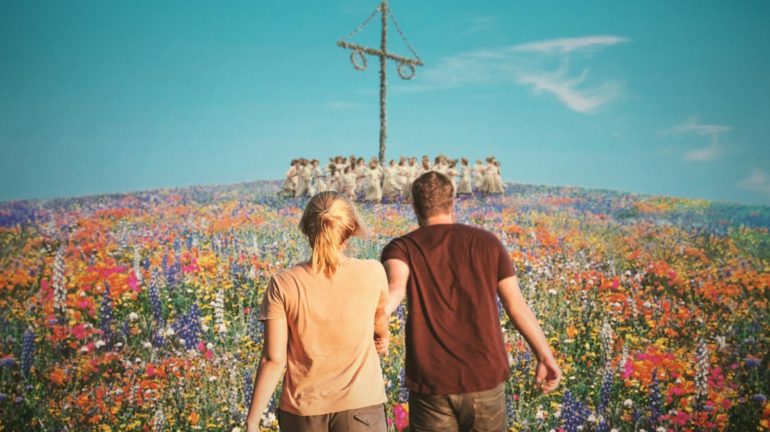Over the past few years, horror has evolved from its place as a blockbuster mainstay: films released by large production companies, films that catered to large audiences but ultimately lacked the artistic quality brought to the forefront by films released in the mid-to-late 2010s. In the past few years, we have seen Get Out and The Witch, It Follows and The Blackcoat’s Daughter, Hereditary and A Quiet Place, Suspiria and Climax, all of which spend time building atmosphere, most of which have been released under the indie moniker. How does that take us into 2019?
In the era of remakes and reboots, 2019 has served as a type of thoroughfare. In a delightful mix of old favorites and new stories, humor has begun to take its place in the horror landscape. Though not always the declarative funny of 2017’s The Babysitter or 2014’s What We Do in the Shadows, the subtle moments of laughter have become a hallmark of the horror genre in 2019.
Most recently, Ari Aster’s sophomore film Midsommar has captured the feelings of shock and unease as we consider protagonist Dani’s descent into a Swedish midsummer festival. In the midst of her unrelenting pain and grief, we find blinding brightness. Though not revolutionary in the way Hereditary brought indie horror to mainstream, commercial audiences, Aster’s second release toyed with our ability to react—and our ability to laugh while muddling through sacrifice and constant feelings of unease. In Jay Krieger’s review of the film, he writes: “This frequent use of comic relief is the biggest surprise of Midsommar, and while it is leaps and bounds away from resembling a horror-comedy, its dark humor is used to alleviate the constant tension and heartbreak.” Perhaps the discussion of how we understand the horror genre in 2019 must start with this most recent release; a film whose aesthetic quality screams tranquillity, but keeps unsettled audiences afloat with constant harrowed laughter.
The fresh summertime of Midsommar complements Jordan Peele’s dusky Us, which situates its viewer in the unfamiliar familiar—the uncanny—where something constantly lingers just a step off beat. Though Peele leaves his audience with the need to watch their back, to make our way through the world he has created, Peele offers reprieve in the form of humor that has characterized both his early career and his work in Get Out. Krieger again notes the comedic work at play, saying, “I was not expecting to laugh as much as I did only moments later to have the rug pulled out from underneath me; my laughs replaced with shouts. The use of humor allows the scares breathing room, which helps to retain their unexpectedness, as well as the film’s immaculate pacing.” Without the comedic relief, Us might have been unbearably difficult to get through. Laughter has the effect of not only holding the audience’s attention, but providing groundwork for understanding how horror films fit into our cultural monolith.
Those these two powerhouses come to the forefront in defining the genre at this point in the year; we must not forget the popularity of remakes (Child’s Play), renewed adaptations (Pet Sematary), and installments of modern horror franchises (Annabelle Comes Home). As the horror genre continues to expand, audiences for horror will become more diverse, allowing my favorite genre to reach moviegoers who may have previously admonished “scary movies” as cash grabs with jump scares. Though that may have been the perception of the horror genre for a while, horror films are and have always been incredibly complex mirrors of contemporary life, heightened realities to make us frightened, yes, but also instrumental in criticizing and representing the state of our world.
This, then, brings me to The Dead Don’t Die, a horror-comedy offering from Jim Jarmusch, which left me in tears of laughter, both from its fantastic leads (Bill Murray, Adam Driver, Chloe Sevigny) and its self-referential humor. I watched this in a full theater, where there were as many people cracking up as there were viewers left with faces contorted in confusion. Seemingly an oddball compared to the other films mentioned, Jarmusch’s zom-com throws out the intense seriousness of these other films in favor of complete lunacy. The characters’ awareness of their presence in what appears to be a horror film holds down the meandering plot and eccentric characters (one of whom is Tilda Swinton, acting as Tilda Swinton?). Though not an instant classic or my favorite film of the year, Jarmusch’s in-house commentary—by way of Scream—could have the potential to influence how we see horror in the future.
As 2019 barrels towards its end, more horror lies on the horizon: Doctor Sleep, IT: Chapter Two, The Addams Family, Zombieland: Double Tap, and Black Christmas to name just a few. Spooky season is slowly approaching, which means we still have time to see how horror’s foray into humor will continue to characterize the genre as we close out the 2010s.
Some of the coverage you find on Cultured Vultures contains affiliate links, which provide us with small commissions based on purchases made from visiting our site. We cover gaming news, movie reviews, wrestling and much more.



